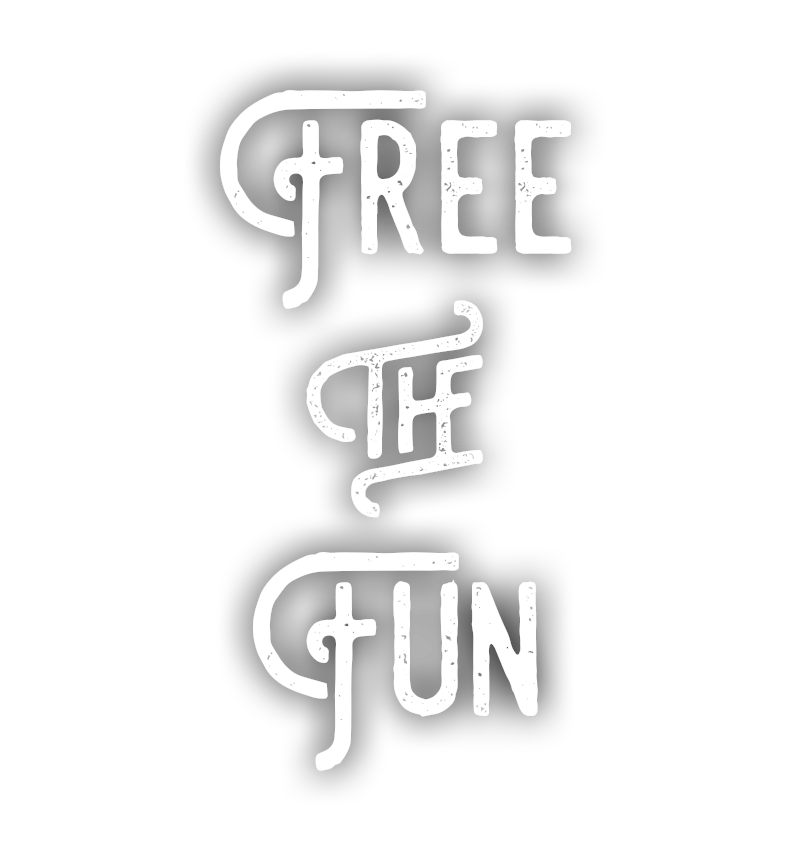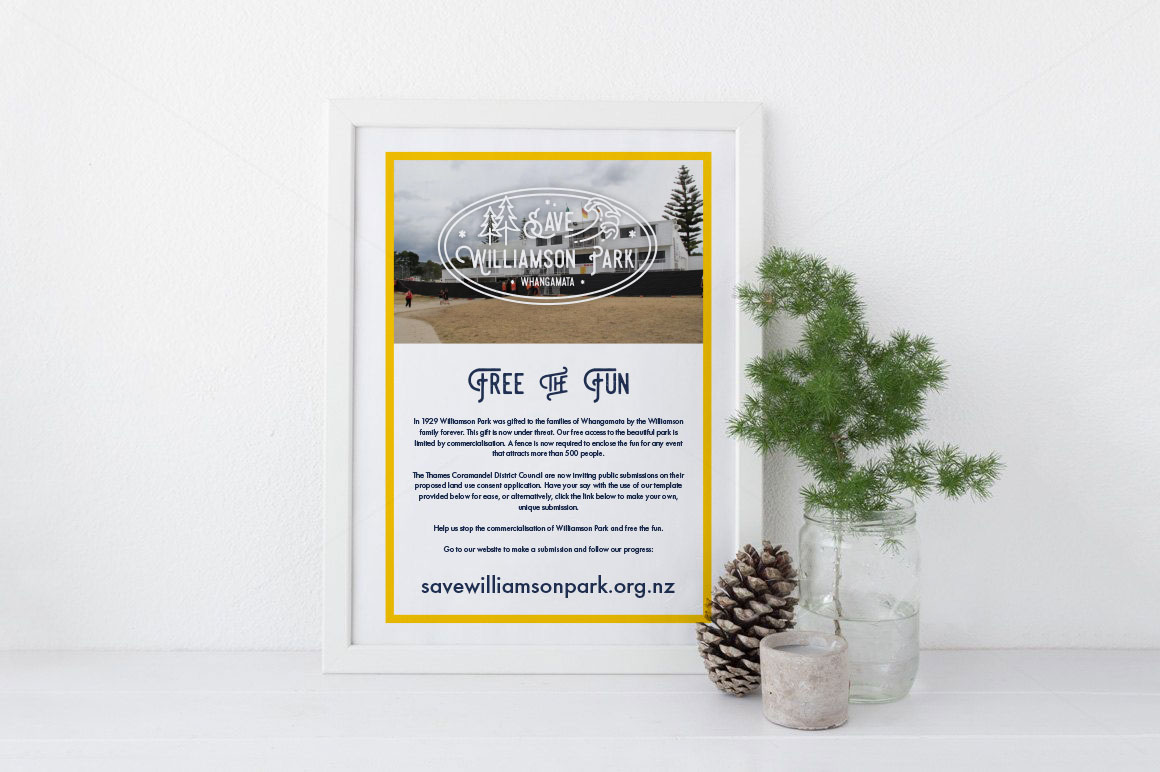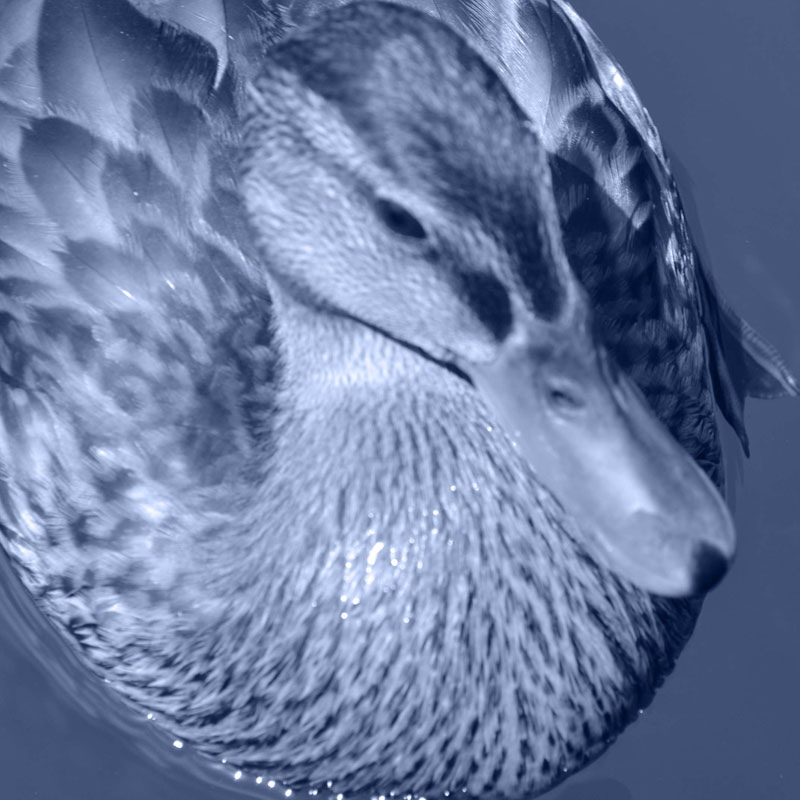
ABOUT THE PARK
In 1929 Williamson Park was gifted to the families of Whangamata by the Williamson family ‘for the use of the public forever’. This gift is now under threat. Our free access to the beautiful park is limited by commercialisation. A resource consent is now required for any event that attracts more than 500 people. As part of its resource consent the Council is proposing to fence people out of the park unless they have paid to get in. This is wrong and needs to be stopped. Community-based fun events do not need a security fence, and entry to the park must remain free to everyone!
Thank you for making your submission to the council, please donate to the cause so we can continue in our fight to free the fun!
WHAT WE CAN DO
By making submissions about the application for consent, the community can provide their input and views to the applicants. The consenting body will take into account the submissions made when deciding whether or not to grant the application.
DONATE TO THE CAUSE
Account Name: Williamson Park Fund
Account Number: 03 0255 0018771 025
MAKE A SUBMISSION
Your submission options:
You are able to make a submission to the Thames Coromandel District Council by several means. You can either make a submission using the online portal or by using the form provided on the TCDC website and emailing/posting it to the Council. Provided below are some template answers to a submission opposing the land use consent application. Feel free to use as much or as little of the template as you wish in your own submission.
Below this template is based on the questions asked of you by the Council in their online forms here. Here is a link to this template in a document format here.
Alternatively, you can download this Prefilled PDF Submission Form, complete your details by hand/computer and then either email it to customer.services@tcdc.govt.nz or post to Thames-Coromandel District Council, Private Bag, 515 Mackay Street, Thames, 3500.
or
Click the orange ‘Read and Submit’ button on the right, register to the site then copy the text three times in the grey boxes below.
1. Specific parts of the application the submissions refer to:
It is understood that the Thames Coromandel District Council has received an application for Land Use Consent to allow for 20 daytime, and seven night time events per year to occur at Williamson Park. This is consent application is comprehensive because it seeks consent for the events to occur for the next 15 years.
This submission speaks to the Council’s application as a whole.
2. Submission details:
- Do you support or oppose?
- Are you neutral to any parts of the application?
- What are your reasons for your view?
I oppose the application for the Land Use Consent. This is because of the following reasons, each address in turn:
-The gifting of Williamson Park and the anti-commercialisation clause
-The underlying policy of the Reserves Act 1977, section 17
-Limitations imposed on the public’s freedom of use
-The fact that the information submitted to the public is incorrect
Williamson Park was gifted to the families of Whangamata in 1929. It was done so on the pretext that the Park would be used by the community for free. There was, and continues to be, resistance against the commercialisation of the park. The only commercial venture allowed within the vicinty of the Park is Blackies Cafe. This was an accepted commercial use of the park by the Williamson family.
It is understood that the Park comes within the definition of a ‘reserve’ as per section 2 of the Reserves Act 1977 (“the Act”). Because the Park is classified as a “recreational reserve” it is subject to section 17 of the Act. As per section 17(2)(a), “the public shall have freedom of entry and access to the reserve…” It is accepted that exceptions apply to this, however it is submitted that those exceptions have no application in this context. With the erection of fences required for the proposed events, access to the reserve, and thus the beach is restricted. Further, (2)(c) calls for protection of “those qualities of the reserve which contribute to the pleasantness, harmony, and cohesion of the natural environment and to the better use and enjoyment of the reserve shall be conserved.” It is submitted that the use of the park for commercial gain does not promote such qualities of the reserve. The qualities would be diminished due to:
-The restricted access to the patrolled area of the beach;
-The restricted use of the reserve;
-The disrupted pleasantness of the reserve during the period in which the fencing is up;
-Restricted ease of access to and from the surf club for those who need medical attention.
However the main issue with the use of the Park in such as manner as the consent application seeks, is the restricted freedom associated with the park. During the summer of 2017 – 2018, the use of the Park was restricted for around 11 days at the peak of the holiday period. This was because the fencing which enclosed the three events, did not come down in between events.
Finally, the information distributed to the community has been factually incorrect. Of note, the document titled “Police on use of Williamson Park in Whangamata” it states that the Community Board wishes to protect the current events and festivals that are associated with the Park. These events are those that annually occur such as Anzac Day or Brits at the Beach. This statement implies that without the granting of the consent application, the annual events will cease to continue. This is incorrect.
It is submitted that these events have never been in jeopardy because their existence is assured due to the policy that the public are allowed free access to the Park. No other council in New Zealand is promoting the Proposed District Plan requiring a resource consent for events attracting more than 500 people.
3. Seeking the following decision from the Consent Authority:
- Provide precise details, including parts of the application you wish to have amended and the general nature of any conditions sought.
It is submitted that the consent application should be denied. Allowing the application will enable the slow removal of the public’s freedom to access Williamson Park during the height of summer due to the increase in summer festivals and events and the continued fencing spanning these events. The Park will be unduly fenced off from the community, who will even be required to pay to access the Park for some events. The consent is not required to ensure the continued success of events such as the Brits on the Beach or Anzac Day commemorations.
You are able to state whether you wish to be heard in support of your written submission or not, or alternatively, if there are multiple submissions of a similar nature to yours, be heard as joint support to the collective submissions.
SPREAD THE WORD
Download and print our poster then put it up on your local notice board or in your favourite cafe.

LEGAL BACKGROUND
What, and why, the consent is being applied for:
The Whangamata Community Board, on behalf of the Thames Coromandel District Council, is applying to the Thames Coromandel District Council for a consent application allowing twenty (20) day time, and seven (7) night time events to be allowed to occur at Williamson Park. The period of consent sought is fifteen years.
The Gift:
The Williamson family began subdividing their land in the 1920s. They decided that the most valuable piece of land was along the beach front and should be given to the Whangamata community as a whole. This area turned into Williamson Park, a recreational reserve for the families of Whangamata.
It is understood that conditions of the deed of gift included a requirement that the Park was not to be used for commercial purposes.
The Reserves Act 1977:
Williamson Park is classified as a “Recreation Active Zone” (Outside all Policy Areas) in the Operative District Plan and as a “Recreational Passive Zone” (Coastal Environment) in the Proposed District Plan (Appeals Version) and is thereby subject to the principles in Section 17 of the Reserves Act 1977. Of particular interest is subsection (2)(a) and (2)(c). See the Reserve_Management_Plan.
Freedom of access:
Subsection (2)(a) calls for the maintenance of the public’s freedom of entry and access to the reserve. It may be understandable if an event is occurring that the use of the park will be restricted. However with the Proposed District Plan calling for fencing to surround events with more than 500 gatherers, it is likely that more disruption to the freedom will occur.
It was noted by residents of Whangamata that a large proportion of Williamson Park was fenced off to the public for around 11 days during the peak of the 2017 / 2018 summer period. The fencing remained standing in between the three events that occurred during the summer.
The consent application asks that 27 events be permitted during the year. However it is likely that most of these events will occur during the summer (although this is not confirmed). Thus Williamson Park could be fenced off from the public for up to a month of the summer period. Thus the consent application, in association with the Proposed District Plan, is contrary to the freedom policy under section 17.
Preservation of the Park’s qualities:
Subsection (2)(c) highlights the purpose of maintaining the qualities of the reserve. It is also noted in the qualities of Williamson Park are those very qualities for which it was gifted to the community of Whangamata and the reasons subdivision was not allowed on this prime piece of real estate.
The qualities of the park are:
- The ease of access to the patrolled area of the beach;
- The use of the reserve for family activities so young people have a safe place to get out and play in the sun with access to shade;
- The pleasantness of the park and the views of the bay
- The ease of access to and from the surf club for those who need medical attention.
These are the very qualities of Williamson Park for which it was gifted and the reasons why subdivision was not allowed on this prime piece of real estate.



